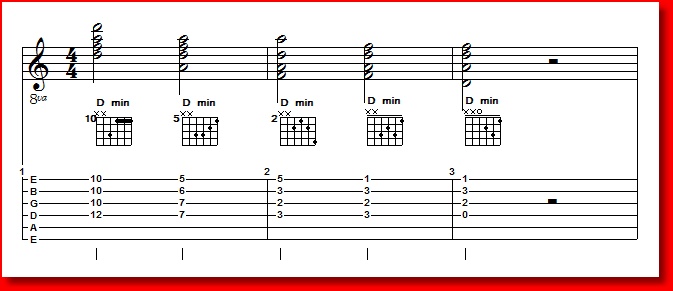
Appendix 3 - Lesson 2
Minor Chord Forms
Notes
Minor Triad Forms: As with Major triads, you're probably going to recognize all of the chord forms as old friends. The Key of C has three minor chords in it: ii, iii, and vi. I'm using the ii or D min, but everything applies to the iii and vi chords. We'll continue with the same philosophy of "pivot notes". Here they are:

Minor Triad Chord Forms
The first form doesn't have a pivot note pair without a bit of a stretch, so I didn't include it. The third form is a handful, at least to me, from the nut to the 5th fret. But I find it useful high on the fretboard, say for F min and G min.
Minor 7 Forms: This should be a review after studying Major 6 forms, especially if you played the Maj6 chords in all keys. Here they are for D minor, the super tonic7 or ii7 of the Key of C:
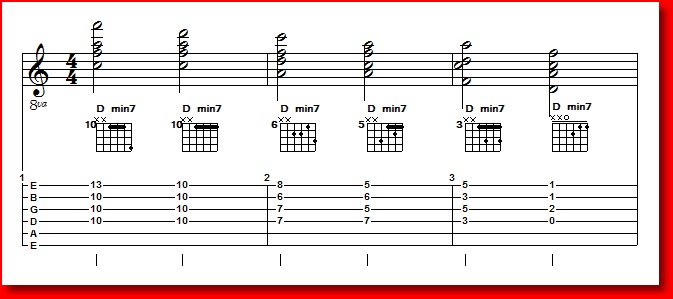
Minor 7 Chord Forms
There shouldn't be a single surprise here as they are not only old friends, but recent re-acquaintances. The first form doesn't have a root and is usually thought of as a Major triad, but it works for a minor 7th. The rest are straight from the Major 6 discussion.
Minor 6 Forms: Throughout Mickey's course, these forms are only referred to as min6, when in fact, they are also minor7b5 (sometimes referred to, especially by nonguitarists, as half diminished), and a dominant 9 without a root. A simple way to remember them was taught to me by Art Borgeson: Think of a Major triad, e.g., G, comprising the notes G - B - D. The form can be a G9 (once again without a root), B min7b5 (or a B 1/2dim7), or a D min6. Here are those forms:
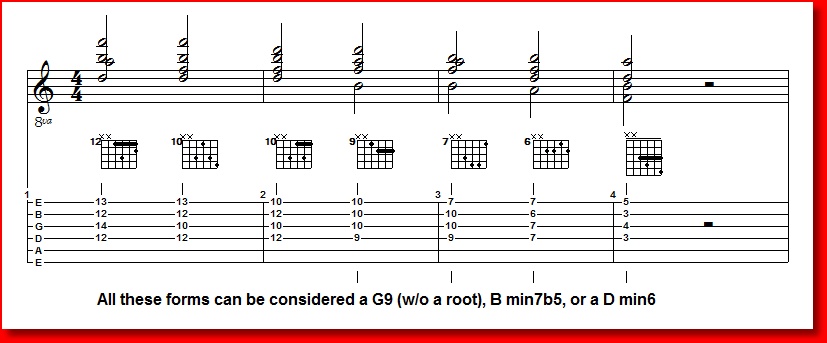
Minor 6 (or Minor 7b5 or Dom 9) Chord Forms
All of these forms are common, with maybe the fifth form less common than the rest. But all are useful. Because it can be three different forms that means it wants to resolve to any of three forms: the V9 wants to go to the I, the vii7b5 wants to go to either a iii or to I, and the ii6 wants to go to V. Generally speaking, if you play a min7 chord, move the 7th one fret lower. You have a min7 to min6 progression without really thinking too much about it. Try these minor progressions:
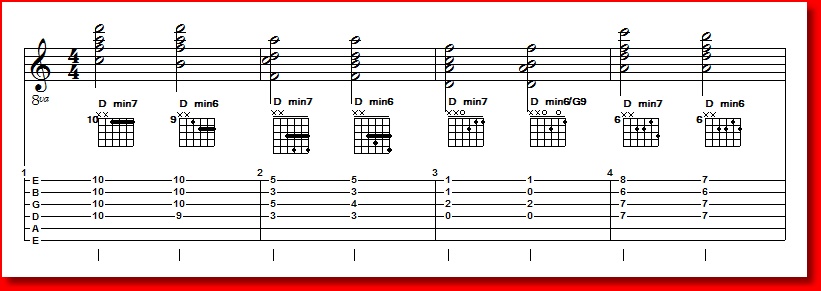
Minor 7 to Minor 6 Progressions
In Measure 1, the 7th to 6th note movement occurs on the 4th string, Measure 2, the third, Measure 3, the 2nd, and Measure 1, the 1st. Note what happens if you play this exercise with these measures in the following order: 1 to 4 to 2 to 3. The highest note descends almost like a descending scale. We can use this to build more interest where our tune has 4 measures of a minor or dominant harmony.
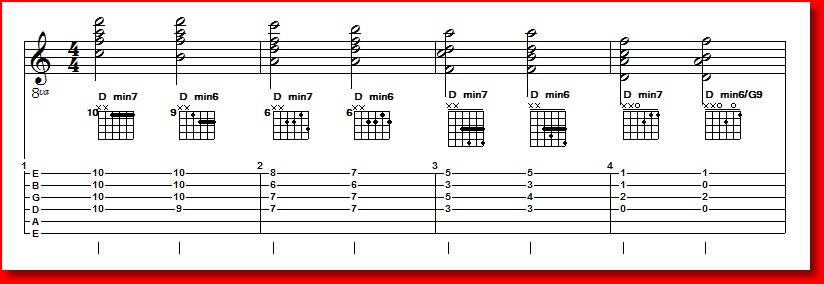
Descending Minor 7 to Minor 6 Progressions
I remember the first time I discovered this trick for myself. I was so amazed at the versatility of this progression compared to playing our standard Group A or Group B chords. When I tried to apply this to the bass strings, it became a lot harder. I discovered the difference was due to the interval of a Major Third between the 3rd and 2nd strings. Using closed spaced bass strings the interval is a perfect 4th between the 6th through 3rd strings.
Miscellaneous Minor Forms: There's several more minor forms that are very useful and most were studied in Mickey's course. Right now would be a good time to go back and review Lesson 1. After the review, I'm sure you'll agree that this paragraph is a review. Let's look at the most important of the miscellaneous minor forms:
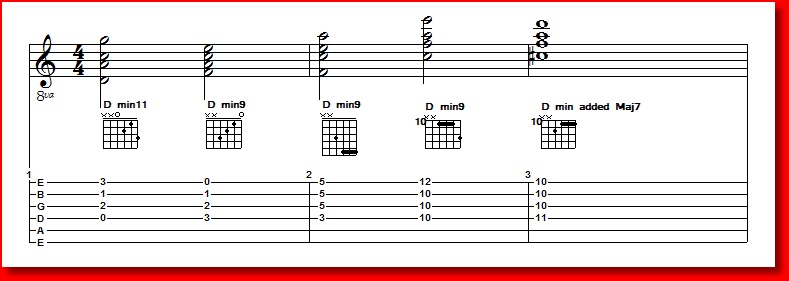
Miscellaneous Minor Melody Chord Forms
The first form is one of those ambiguous forms that we can call by several names: D min11, D11, D7sus4, and D min7sus4. Why? It doesn't have a 3rd, which is an F in D min, nor an F# in D. The next three forms are minor 9 and what do we notice about them? That's right, they are Major 7 forms. In fact, any Major7 form can be used as a minor 9, a minor third lower than its root. That is, an F Maj7 can sub as a D min9 without a root. To review the concept, go to Lessons 18 and 19 of Mickey's course.
The last form is a Minor chord with an added Maj7. It's a pretty strange sounding chord when played alone. But used as a passing chord between a minor triad and a minor7, it becomes one of the best known and easily recognizable chord progressions in music. Listen to the intro of the Beatles' recording of Michelle.
Just keep it fun!